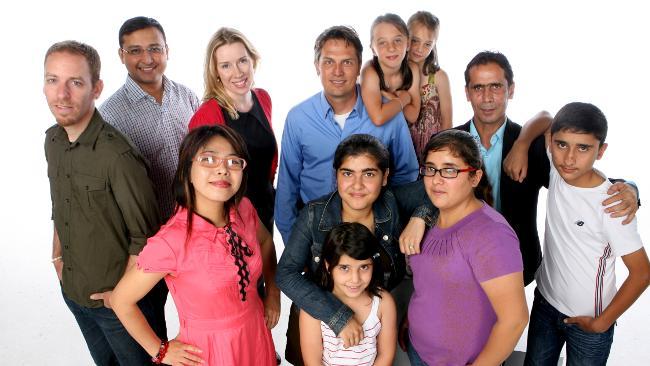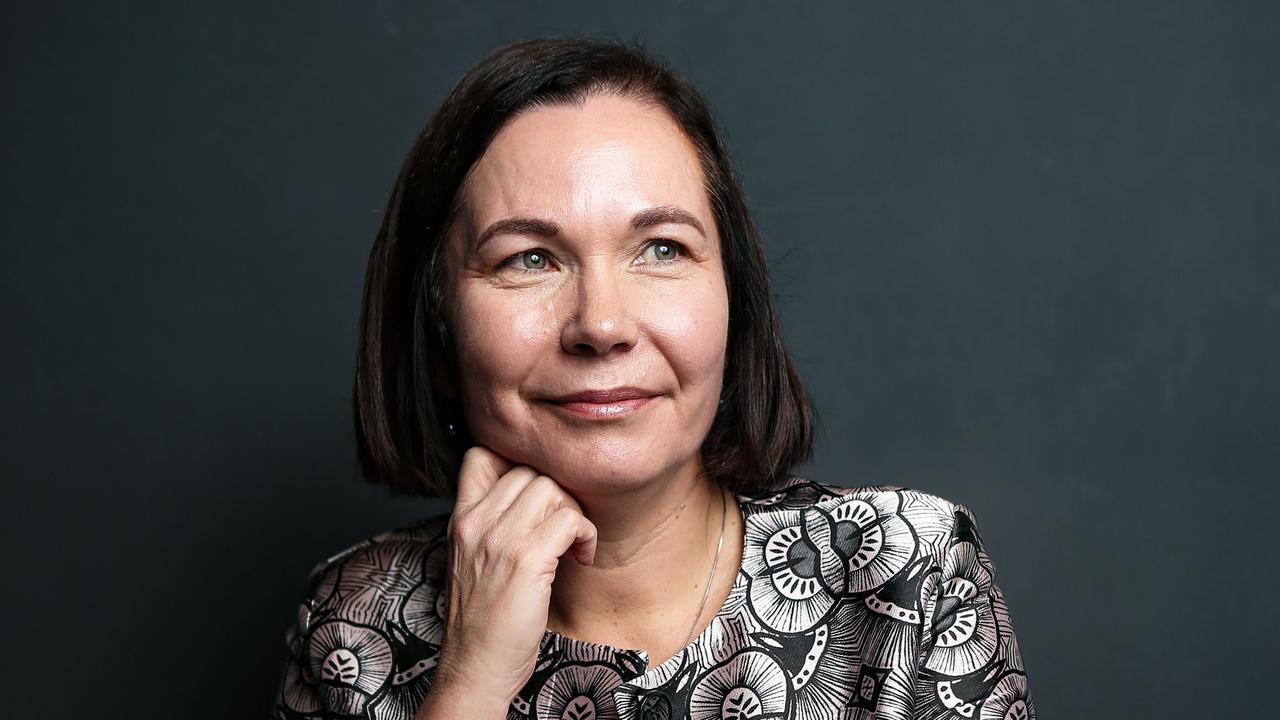Populist pitch on population
YESTERDAY, Tony Abbott broke the unofficial bipartisan contract on immigration levels.

YESTERDAY, Tony Abbott broke the unofficial bipartisan contract on immigration levels.
The agreement that says levels would be dictated by economic growth and labour force demand, not political calculations.
Instead, he has placed a cap on migration levels of 1.4 per cent of the population, or 170,000 annually, a response to two years of unusually high immigration.
Bipartisan agreement on immigration levels was already under some strain. In September 2008, the Australian Bureau of Statistics changed the way it projected Australia's population growth, factoring into its long-term trends the higher rates of immigration Australia has had over the past decade.
A year later, Kevin Rudd declared on the ABC's The 7.30 Report that he was a supporter of a big Australia. Once Julia Gillard took over the prime ministership, she quickly rebadged the government's policy on population growth around sustainability - rather than economic strength - but so far without nominating a figure for what that might be - only that she does not support a "big Australia".
But Gillard has made it clear that she will also change immigration settings.
This debate has been dominated by smoke and mirrors and is now happening in the heated context of an election campaign. The figure Abbott has imposed as the limit a Coalition government would work towards in its first term is in line with the levels Australia's immigration rate has been at for much of the past decade, and it is double the rate of the Organisation for Economic Co-operation and Development average.
But it is the decision to set a cap that has caused some demographers to question whether doing so represents good policy.
The Australian National University's director of the Australian Demographic and Social Research Institute, Peter McDonald, says: "I don't think that it is sensible to have a target, no country in the world does that."
He points out that historically, labour market needs have been the guiding force in determining migration levels. "A target has no basis. Why not 160,000, or 180,000, or 250,000?" he asks.
The Coalition's policy intends to preserve the rate of migration at the skilled end of the band, and in particular it won't cut the number of 457 temporary visas or the refugee quota. It also will quarantine Western Australia and Queensland from such cuts, thereby supporting the labour demands of the mining boom.
This stylising of the policy has been designed to counter criticisms from business that the policy won't meet the needs of the growing economy and to appease any suggestion that the opposition is playing politics with the number of refugees Australia accepts.
According to the Coalition's immigration spokesman Scott Morrison, "Australians are looking for payment up-front on infrastructure and services before they support a higher rate of population growth."
Demographer Bernard Salt understands the angst Australians have about infrastructure bottlenecks and the need to improve service delivery. But he feels that those issues shouldn't be wrapped up in the migration debate. "Those sorts of problems have always been a problem. It is about managing people's expectations as well as finding solutions to those issues quite independently," he says.
Salt is comfortable about the Coalition's rate of 170,000, but agrees with McDonald that setting a cap is an unnecessary constriction. He is most concerned that any cap is high enough to allow Australia to bring in enough migrants to give the nation an age spread capable of handling the ageing of the population.
"I am happy with the Abbott figure," Salt says, also pointing out that it is only just high enough for Australia to manage the ageing of the population. "We have been going through hyper growth. Even someone like me who supports growth will concede a more sensible level is around 180,000, which is pretty close to what Abbott is suggesting."
But both demographers point out that the limits of a cap will be tough to abide by if external factors vary immigration levels.
Australia's immigration levels of nearly 300,000 in 2008-09 and 230,000 in 2009-10 were inflated by expats returning home because of the global financial crisis and more New Zealanders coming over looking for work, Salt says.
That's why he expects the figures to naturally recede in the years ahead even without the Coalition's cap, as BIS Shrapnel has estimated in research it released in May this year. According to immigration growth estimates by BIS Shrapnel, "net overseas migration is expected to be down to 175,000 persons in 2010-11 and 145,000 persons in 2011-12. As a result, national population growth is expected to slow to about 1.5 per cent in 2010-11, and 1.3 per cent in 2011-12".
"The forecast figures actually take us lower than what Tony Abbott has claimed today," the Minister for Sustainable Population Tony Burke says. "All that he has done is look at the projection for the following year, claimed that it is his own policy, and thought he could get away with fooling the Australian people."
If those estimates hold true, the Coalition's policy is mere window dressing, promising to reduce net migration in a way that would have occurred anyway.
Salt and McDonald wonder how the Coalition will manage its cap. It cannot deny expats return entry to their homeland, and on some estimates there are as many as a million expats working overseas at the moment.
There are question marks over how the cap would be adhered to if the rate doesn't come down naturally. While Abbott wants a cap mostly for political reasons - the policy announcement generated the sort of newspaper headlines on Sunday that he was after: "Libs shut door: vow to slash 130,000 migrants" - his policy includes renaming the Productivity Commission the productivity and sustainability commission and commissioning it to assess what is a viable rate of immigration by the end of the Coalition's first term. This means the cap will have been set by the politicians before the newly constructed commission reports for the first time.
Predetermining the cap on immigration is a policy approach not unlike Labor's predetermined view on climate change and a price on carbon ahead of the citizen assembly it intends to establish to discuss the issue.
Morrison isn't concerned by this, saying he would be surprised if the 1.4 per cent cap didn't fall within the range the commission will stipulate when it reports. "I think that they should be doing it the other way around," McDonald says. "If they must have a cap, at least do the research first and then set the level."
On May 2, 2008, Abbott held the Howard government's immigration record up for applause: "One of the Howard government's greatest but least recognised achievements was to rehabilitate the immigration program, increasing numbers to record levels while also increasing popular support for it to record levels.
"It's good that the Liberal Party's history and record is so pro-immigrant, because being anything else would be absolutely toxic to our political prospects."
Labor thinks that rhetoric is inconsistent with the approach now being taken by the Coalition, but Morrison doesn't see what all the fuss is about. "Our population growth rate isn't a scorched earth policy. It is the rate of growth that we have had for 40 years," he says.
This policy, as much as it quarantines the refugee intake from any cuts, is about boat arrivals as well as appeasing community concerns about strains on infrastructure such as public transport.
At his press conference yesterday to announce the new policy, the opposition leader tied boat arrivals to the wider debate.
"Let's have an immigration program that people can support, that they don't think is out of control, that they don't think has been subcontracted to people-smugglers."
He made that his last comment, denying the media travelling with him the chance to ask a question in response.
The Coalition has long argued that a key element of Howard's ability to increase immigration numbers, drawing on the skills of new Australians as part of record economic growth during his years in office, was his simultaneous efforts to give Australians confidence in the security of their borders. Interviewed for his biography, John Howard said in 2006: "People feel that the program is under control", crediting his border protect policies for that.
While Abbott might believe there is little choice but to pander to community concerns about immigration levels by imposing an artificial cap, because the community's trust in the government to manage the wider immigration program has faded, that doesn't alter the fact that he is now pledging to stop the boats and arbitrarily tighten the immigration intake, something Howard never did.
Migrants have long been a key element in Australia's growing population and prosperity, but some demographers such as Bob Birrell argue that it is time for a new debate that distinguishes between growth and prosperity, suggesting population growth is an unsustainable way to prop up productivity.
At the end of World War II, Australia's population was about seven million, 10 per cent of whom were born overseas. By the time of the most recent census in 2006, the population total had increased to about 20 million with 25 per cent born overseas.
While the use of a cap in the Coalition's policy will continue to be debated, there are other elements of its policy design that could also be problematic. If in any given year the government, restricted by a cap, is required to reduce student and family reunion visa numbers, it could have unintended consequences for the education sector and for skilled migration levels.
Australian universities rely heavily on overseas students for their budget bottom lines, a point the Coalition's education spokesman Christopher Pyne was acutely aware of when he announced during this campaign that the Coalition would increase the number of full-fee paying students domestically eligible to attend university.
If cuts to overseas student numbers are imposed on universities and other educational providers, they must find a way to make up the shortfall in an increasingly austere budget climate. It is unclear whether the policy of more full-fee paying domestic students would directly cover the shortfall.
While the family reunion program might seem a politically desirable part of the immigration intake to target for cuts, it may cause skilled migrants whose services are in high demand to migrate to other nations such as Canada and the US, because they would have a better chance of bringing family members in afterwards.
Population policy is a complex area and it will take some time for experts to fully dissect the merits or otherwise of the Coalition's new policy. But politically the government will need to respond to it quickly if the populist pitch in it is to be countered.


